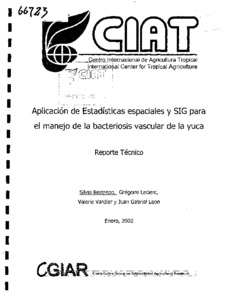Mission
To reduce hunger and poverty, and improve human nutrition in the tropics through research aimed at increasing the eco-efficiency of agriculture.
People
CIAT’s staff includes about 200 scientists. Supported by a wide array of donors, the Center collaborates with hundreds of partners to conduct high-quality research and translate the results into development impact. A Board of Trustees provides oversight of CIAT’s research and financial management.
Values
- Shared organizational ethic
- We respect each other, our partners, and the people who benefit from our work. We act with honesty, integrity, transparency, and environmental responsibility in all of our joint endeavors.
- Learning through partnerships
- We work efficiently and pragmatically together and with partners. Considering our diversity to be a key asset, we adapt readily to change and strive to improve our performance through continuous learning.
- Innovation for impact
- We develop innovative solutions to important challenges in tropical agriculture, resulting in major benefits for the people who support, participate in, and profit from our work.
Members:
Resources
Displaying 496 - 500 of 958Arboles, arbustos y aves en el agrosistema del CIAT : Inventario de árboles y arbustos y de la avifauna del CIAT, Valle del Cauca, Colombia
Aplicación de estadísticas espaciales y SIG para el manejo de la bacteriosis vascular de la yuca
"Land discovery": training and tools for decision support to stakeholder watershed resource management
Use of GIS in land resources management in the Colombian Orinoco Region
Using GIS techniques to aid in predicting a plant virus in beans
Geographical information systems (GIS) assist us in mapping and analyzing outbreaks of diseases in plants, animals and humans. This paper describes how GIS are being used to model the intensity of the outbreak of a plant virus, bean golden mosaic virus (BGMV) in Guatemala, Honduras and El Salvador. BGMV is a geminivirus affecting beans (Phaseolus vulgaris) and is transmitted by a vector, the sweet potato whitefly (Bemisia tabaci). Once a plant is infected by the virus yield losses, at varying locations, can range from 40% to 100%.





